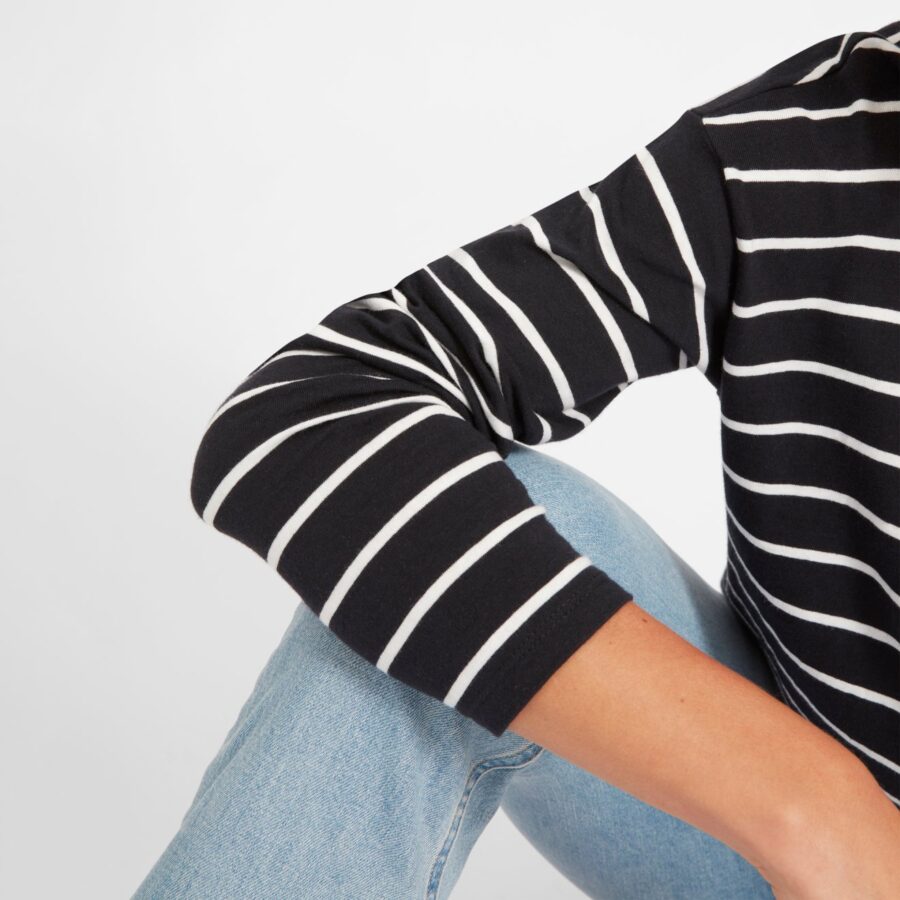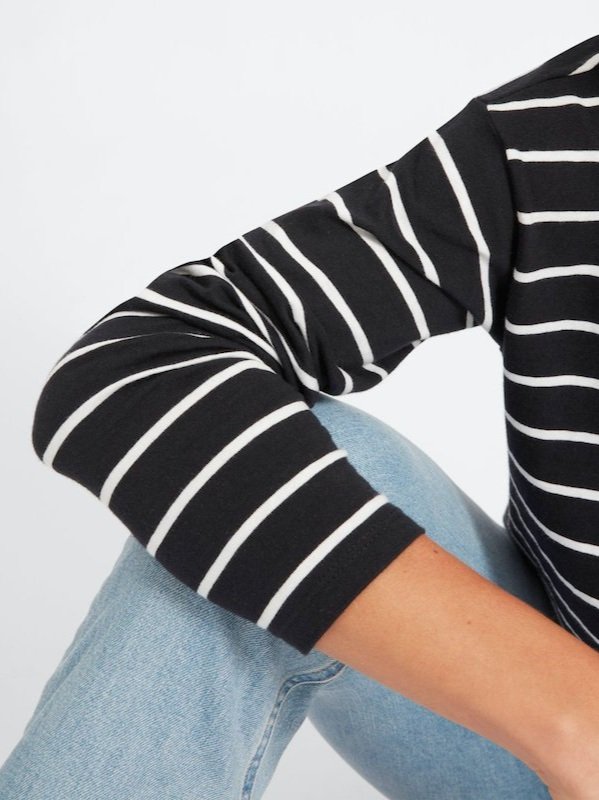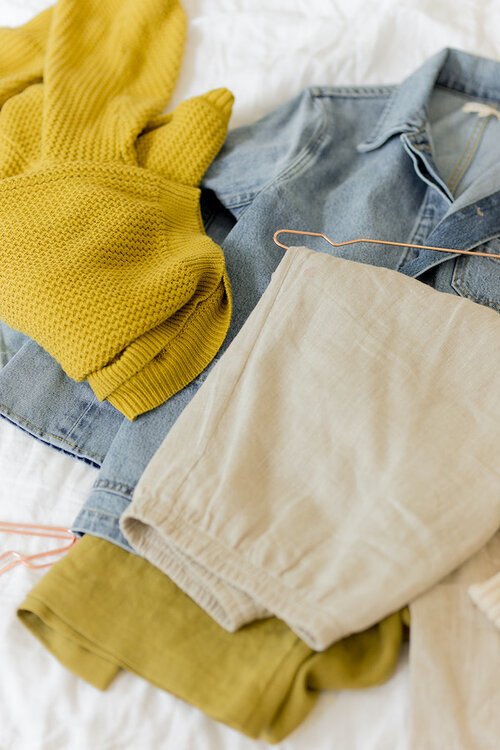
The Somewhat Rebellious History Of The Striped Shirt
The Origins Of Stripes
In my third year of college, I was in a costume class where we studied the play Something Wicked This Way Comes, a dark fantasy about three teenage boys and an exciting traveling circus-turned nightmare. My classmates and I were assigned to work on individual theoretical designs for each of the main characters. I was attempting the design for one of the circus leaders, and discussing a creative block with my professor. She suggested I borrow her copy of a book that she thought would be ‘very interesting to me.’ That book was The Devil’s Cloth: A History of Stripes & Striped Fabric by Michel Pastoureau.
“While today you might consider stripes to be an endlessly classic style—patriotic, even—the design has origins which are less than favorable.”
The title alone was enough to spark my imagination immediately, though the contents are even more captivating. While it would have been nice to have the renderings included in this article I’m almost grateful that I lost them a couple years ago so that I could save myself from public humiliation now—there’s a reason I’m writing now instead of designing. Nevertheless, that experience was the beginning of my true fascination with the pattern which has often been associated with joy on the surface, though reveals eerie truths when you look closer.
Stripes are one of the first examples of woven textiles which continue to be seen in the fashion industry throughout history. While today you might consider stripes to be an endlessly classic style—patriotic, even—the design has origins which are less than favorable. In the middle ages, striped clothing began to be a sign of an outcast or someone who needed to be contained:
“Servants and court jesters wore striped cloth; so did prostitutes, madmen, and criminals, not voluntarily but by official orders. The bold, broad, contrasting stripes of their garments seemed to stand for neither-this-nor-that, ambivalence, ambiguity, and a realm of unclear and violated boundaries.”
-John Major on LoveToKnow
This bold pattern is hard to ignore and therefore used to be linked to individuals who did not want to play by social rules. As history has taught us, time and time again, society becomes incredibly fearful of those who reject the conventional so this aversion to stripes only grew into the 13th century, when Europe’s sumptuary laws made it a legal obligation for certain types of citizens to wear the style.
The deeper you dive into the study of stripes, the more fitting the pattern seems to be for a play featuring circus characters as Something Wicked This Way Comes. John Major explains that a clown or circus member is “a figure whose humor derives from his license to transgress the boundaries of orderly society.” Stripes can be jarring, perfect for characters whose grins are menacing and intentions sinister. While stripes never truly lost their connection to deviance, by the 18th century the design became a much more ordinary part of fashion in Western cultures.
“By the 18th century the design became a much more ordinary part of fashion in Western cultures.”
The next time we see stripes really make a statement is in the 1920s. The book Icons of Fashion by Greda Buxbaum describes that as the decade began, stripes showed up in newly liberated women’s activewear, as this was one of the first times women were allowed to participate in some sporting activities. Prohibition then gave way to all kinds of under-the-table activity and dangerous men such as Al Capone wore pinstripe suits as their chosen uniform.
Fast forward to the mid-1940s and that gangster uniform led to the infamous “zoot suit” worn to make a political statement by communities that were often ignored. Riots broke out in 1943 with U.S. soldiers and sailors seeking out groups of African American, Latino American, and Italian American men who dressed in the oversized pinstripe suits as they saw them as “unpatriotic” during a time when much of America was rationing fabric.
A little over a decade later, another part of the Western world created an entirely new meaning for stripes: “The 1958 Act of France saw navy seamen in the area given a striped woven top bearing 21 horizontal stripes (one for each of Napoleon’s victories) as a uniform, known as a ‘matelot’ or ‘marinière.’” This iteration turned striped shirts into an enduring classic style and created that European chic-ness that Americans are constantly chasing after.
“Subcultures continued to utilize stripes for their respective causes including hippies, punks, and grunge anti-establishment types.”
The refinement of the pattern was quickly overshadowed, however, by the “swinging sixties” which saw the creation of mod and Op Art fashion. These designs weren’t the traditional stripes that many of the previous garments employed, though they turned the regimented lines into optical illusions that easily provoked the older symbolism of stripes: disturbance. Those who wore these styles were part of the counterculture of the time which broke free of old traditions. Subcultures continued to utilize stripes for their respective causes including hippies, punks, and grunge anti-establishment types. Each of these groups wore the pattern in their own way, though all used the formerly classic design as a middle finger to “the man” who was always trying to confine them. Designers like Jean Paul Gaultier, Missoni, and the brand Adidas are still known for and revered for their engagement with stripes to this day.
Today, stripes are all over the place when it comes to clothing, though possibly most concentrated within menswear styles. Pinstripe suits, button-down shirts, and ties for businessmen often have the pattern incorporated in them. While this could be a connection back to its classic meaning, I have a somewhat controversial idea that the stripes are no accident. After the fairly recent reveal of corruption involving Wall Street bankers and the like, stripes may actually be the perfect uniform for some in the business sector. History has circled back to a time of counterculture and raging against “the machine.” Many people see the same stripes which gave our country liberation, as now being used to exclude and limit those living in this country.
“In the stripe there is something that resists enclosure within systems.”
Audrey Stanton was born and raised in the Bay Area and is currently based in Los Angeles. She works as a freelance writer and content creator with a focus in sustainable fashion. Audrey is deeply passionate about conscious living and hopes to continue to spread awareness of ethical consumption.
RELATED READING
Featured image from Everlane’s Box Cut Tee




